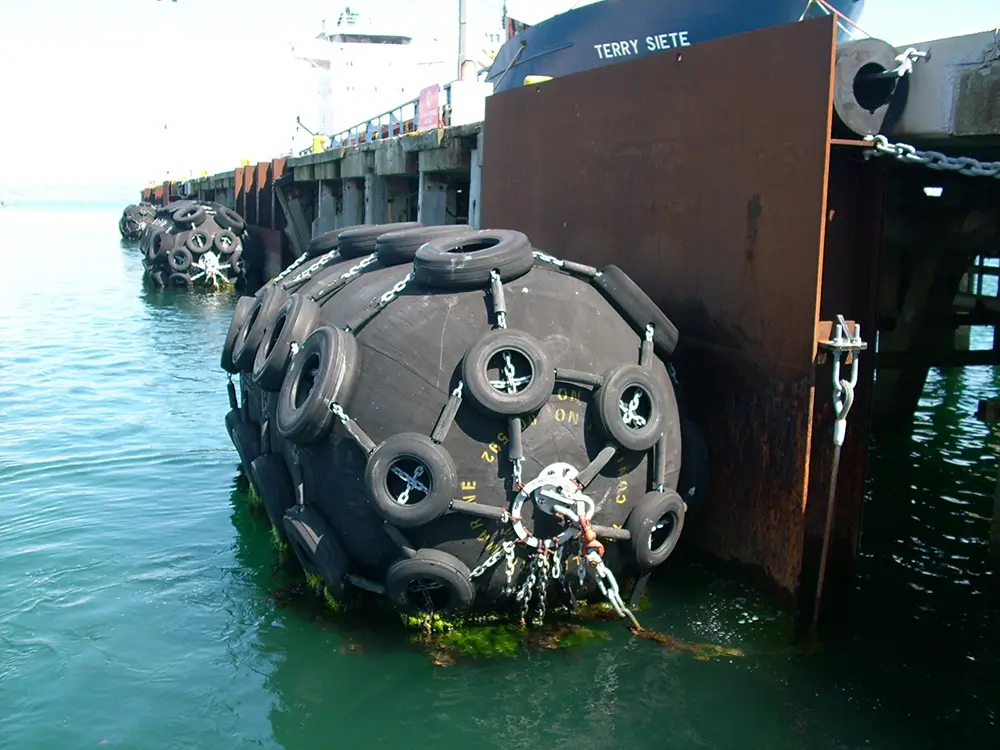What Are Submarine Fenders?
06/25/2025Why Choose Pneumatic Rubber Fenders for Marine Safety
06/26/2025What is the use of pneumatic rubber fender?
Why Pneumatic Rubber Fenders Are Essential in Modern Harbors
Imagine a massive cargo ship approaching a bustling port. Or a sleek cruise liner getting ready to dock. A vital, often unseen, piece of equipment ensures safety: the pneumatic rubber fender. In a world of huge ships and global trade, reliable fendering is urgent. Without it, colossal vessels would cause costly collisions. These collisions would damage ships, port infrastructure, and threaten human lives. At NANHAI, we understand these needs. We provide top-tier pneumatic fenders for the modern maritime industry.
What Are Pneumatic Fenders?
Pneumatic rubber fenders, also known as marine fenders or ship fenders, act as giant, inflatable cushions. They absorb the kinetic energy of a vessel as it berths. Think of them as shock absorbers for ships. They prevent direct contact between the hull and the rigid dock. This is crucial because even at slow speeds, a ship’s mass creates a huge force. Without proper protection, this force could cause significant damage.

Key Uses of Pneumatic Rubber Fender
Pneumatic rubber fenders have many uses. Their main function is to protect vessels and port infrastructure from damage. This happens during berthing, mooring, and unberthing. When a ship approaches a dock, it has momentum. Pneumatic fenders absorb this impact. They spread the load over a large area. This greatly reduces the risk of dents, scrapes, or major structural damage.
These fenders excel in several key areas:
- Handling Different Ship Sizes: Their inflatable nature allows them to compress and adapt. This makes them perfect for various vessel sizes and shapes. It’s very useful in ports with big tidal changes.
- Facilitating Ship-to-Ship (STS) Transfers: They are widely used for STS operations. Here, two vessels moor alongside each other to transfer cargo. Fenders provide a stable buffer, making these delicate maneuvers safe.
- Providing Low Reaction Force: A key benefit is their low reaction force. They absorb energy effectively but put less stress on the ship and dock. This reduces wear and tear over time.
- Easy Installation and Relocation: Compared to fixed systems, pneumatic fenders are easy to install and move. This flexibility helps ports adapt to different ships or operations.
- Cost-Effective and Durable: A quality fender from NANHAI. It is a wise investment. Its long lifespan reduces repair costs for both ships and port facilities. We offer a wide range of pneumatic fenders for sale.
Choosing the right marine fenders is essential. Don’t leave the safety of your vessels and infrastructure to chance.
People Also Ask: Answers
What is a pneumatic fender, and how does it work?
A pneumatic fender is an inflatable rubber fender filled with compressed air. It works by compressing upon impact with a ship or dock. This compression absorbs the vessel’s kinetic energy. The air inside acts like a spring, slowly releasing the energy and preventing damage to the vessel’s hull and the dock.
What are the different types of ship fenders?
There are several types of ship fenders. They include:
- Pneumatic rubber fenders: Inflatable, air-filled fenders.
- Foam-filled fenders: Solid fenders made from closed-cell foam with a tough outer skin.
- Fixed rubber fenders: Rubber pads or strips attached to the dock, such as D-fenders or arch fenders.
- Cell fenders: High-performance, high-energy absorption fenders.
Why are pneumatic fenders preferred for certain applications?
Pneumatic fenders are preferred for applications that need a low reaction force and high energy absorption. Their flexibility makes them great for STS transfers and ports with significant tides. They are also easy to deploy and remove as needed.
How do you maintain pneumatic rubber fenders?
Proper maintenance is key to a long life. Key steps include:
- Regularly checking the internal air pressure.
- Inspect the fender’s body for cuts or damage.
- Checking the chains and shackles for wear or corrosion.
- Cleaning the fender’s surface to remove marine growth.
- Storing the fenders properly when not in use.
What is the lifespan of a pneumatic fender?
A well-maintained pneumatic fender can last 10 to 15 years or even longer. The lifespan depends on the quality of the materials, the frequency of use, and proper maintenance. High-quality pneumatic fenders for sale from reputable companies like NANHAI are designed for maximum durability.
